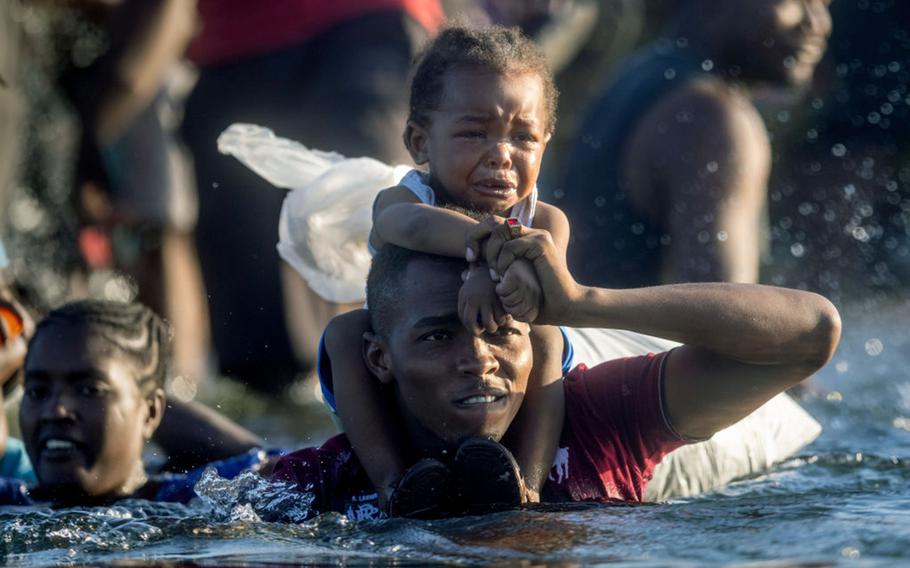
Haitian immigrants cross the Rio Grande back into Mexico from Del Rio, Texas on September 20, 2021 to Ciudad Acuna, Mexico. (John Moore/Getty Images/TNS)
VERACRUZ, Mexico (Tribune News Service) — For weeks, deeply upsetting images have dominated the Mexican news of Haitian families clutching sobbing babies in diapers as they attempt to make their way to the U.S. to apply for asylum.
“Haitians in Chiapas live in migrant chaos,” said one article a month ago in the Mexican national newspaper El Universal. “Earthquake, storms and floods: the constant battle facing Haitians,” read a headline in El Sol de Mexico, also a month ago. “Over 200 Haitian migrants refuse to leave bus in Veracruz“ read a headline in the national publication, Proceso.
That tens of thousands of people were en route to the U.S. to apply for asylum was no secret. Yet, the U.S. government was not prepared to receive them.
On a migrant route
In Veracruz, on the Gulf of Mexico, the sight of desperate migrants, often on foot, heading north from central America toward what they believe to be a better life — and asylum — in the United States is not uncommon.
For the past two years, the number of Haitian migrants looking for work, refuge and sustenance have been few — dotting the roadsides of the most frequently traveled immigration routes in the country: Starting at the Guatemala-Mexico border in the state of Chiapas, up through Veracruz, onto the railways of “La Bestia,” up into the northern regions of the country, and on to the U.S.
After the last major earthquake in western Haiti in August, and Tropical Storm Grace just days later, many Haitians who had been migrating to South and Central America since the 2010 quake now saw their home country as even less safe to return to. After coordinating on social media, they started traveling — bus loads teeming with exhausted, sweating children and parents — through Mexico, toward the U.S. to apply for asylum.
“In the past 2-3 weeks we’ve seen a surge of migrants, mostly Haitian nationals,” said Alba Valdez Alemán, a Veracruz based journalist with Notiver who collaborates with the Mesoamerican Migrant Movement. “Entire families have had to leave countries they immigrated to: Chile and Brazil, because of [the lack of] quality of life. Now we are seeing a lot of operations [in Mexico]: migrants stopped at checkpoints.”
Women have been particularly affected. Alemán, writing for Meso American Migrant Movement about maternity and migration, recounted the plight of female Haitian migrants passing through Veracruz: “Thousands of Haitian men and women have overflowed into Mexican territory, but according to UN Women, 51 percent of the people who migrate in the last decade are women.”
“I think we will continue to see more migrants,” Alemán said Friday. “I was speaking with a colleague, a photographer, he’d been in camps in Colombia recently. He said it’s overflowing with migrants... In one camp, he said, there was easily 40,000 people.”
___
Carli Pierson is an Opinion writer at USA TODAY.
(c)2021 USA Today
Visit USA Today at www.usatoday.com
Distributed by Tribune Content Agency, LLC.